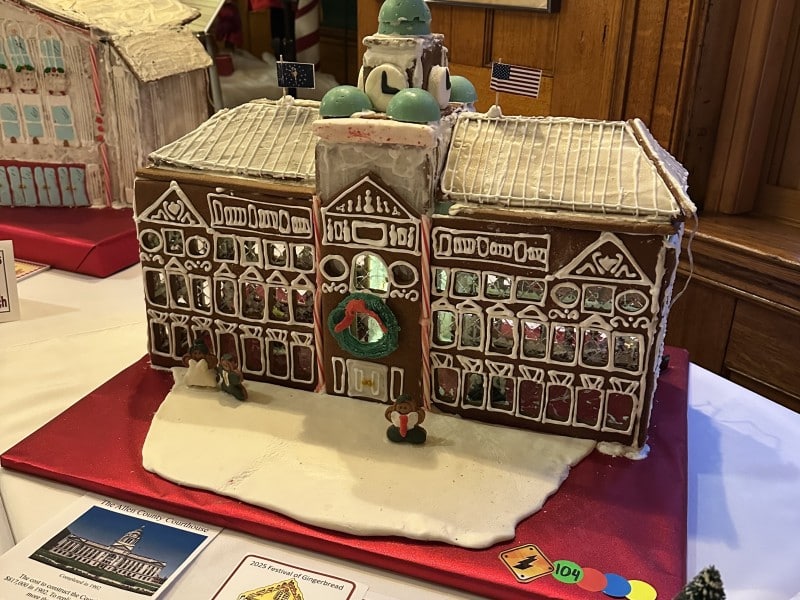Art This Way: How street art is taking over downtown Fort Wayne
It’s art that doesn’t depict local history or folklore. Sometimes, it’s not even done by local artists, and that’s all part of the allure.

If you’ve walked through the heart of downtown Fort Wayne lately, you’ve probably noticed a difference. The walls of alleys that were once muted tones of gray and brown are now coming alive with colorful murals—a portrait of the poet Walt Whitman on a blue background, a panda licking a green ice cream cone that drips from its head, blocks of bright colors and bold patterns.
It’s art that doesn’t depict local history or folklore. Sometimes, it’s not even done by local artists, and that’s all part of the allure, says artist Alex Hall.
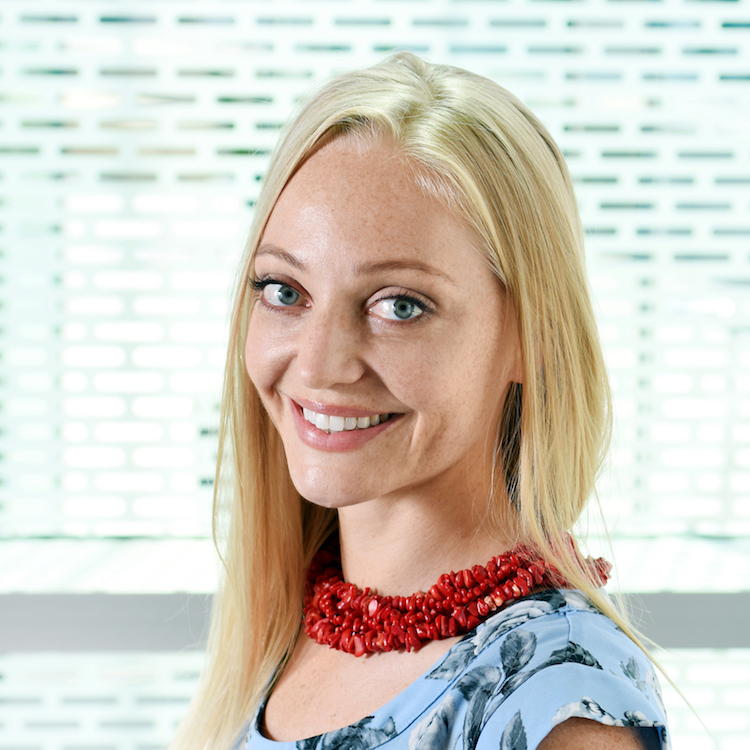
“You used to see a lot of murals with local fanfare, like Johnny Appleseed, three rivers, or Mad Anthony Wayne,” she explains. “Now, what we’re doing is grasping onto that fine art—real street art—gallery vibe that’s happening in big cities.”
Hall is the Volunteer Organizer of Art This Way, a program that operates under the Fort Wayne Downtown Improvement District, bringing street art to two-blocks of alleyways since 2017. It was originally called the Alleyway Activation Mural Project, and the idea was to use artwork to draw people into a target area of downtown to create a cohesive, saturated outdoor gallery experience.
“You may come downtown to eat, and then walk to the mural across the street, and then maybe wander down to see some of the other art displays,” Hall says. “It was intended to be a catalyst to what’s already happening downtown, and also, a new experience.”
In 2017, the project became an official public art program that fundraises and commissions fine art murals on behalf of downtown property owners.
The first year, the group planned and funded three small murals in the blocks between Wayne Street and Washington Boulevard, stretching from Harrison Street and Clinton Street.
Then in 2018, four larger murals were added to the area.
Looking ahead to 2019, Hall and her team have big plans for inundating the space with more creations—going beyond alleyways and 2D projects.
So what’s next for Art This Way? Understanding that starts with going back to the program’s roots in street art culture.
***
For generations, communities across the country have embraced city-centric public artwork, depicting local people and places. But, historically, smaller communities have been less accepting of what’s called “street art.”
It’s had a bad rap as being “graffiti” or “gang-related,” Hall says.
“All of these things that were actually not very true,” she explains, but it goes back to the art form’s beginnings.
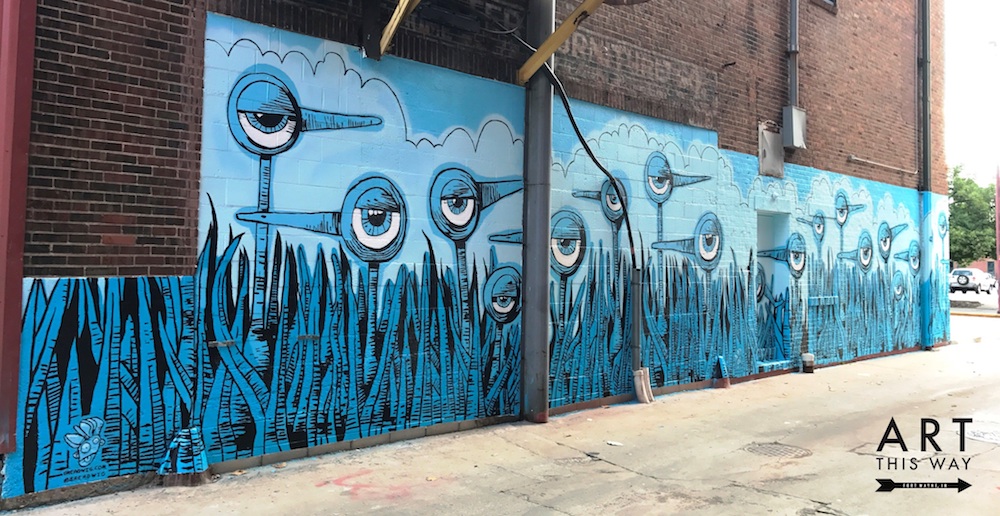
Street art started with graffiti artists tagging (or writing their names on) public spaces illegally in the late 60s and early 70s. The act was intended to be transgressive, or as the Invaluable blog writes, “in a world dominated by global branding, graffiti alienated the power of commercialism and government infrastructure.”
But while street art was often viewed as vandalism by city leaders, it served as an outlet for citizens to express themselves.
Over time, street artists like Banksy developed a name for themselves and garnered global followings around their work and its messages, largely thanks to viral posts on the internet.
As more people began to appreciate street art’s value, some of it morphed into high end, fine art pieces that are now being displayed in galleries.
“What’s happening now, is you’re seeing communities like London and Berlin creating Street Art Festivals and embracing the fine art evolution of what street art is,” Hall says. “Banksy does gallery shows. So you have people who have started out doing illegal art on the street who are now being very much so recognized in the fine art world.”
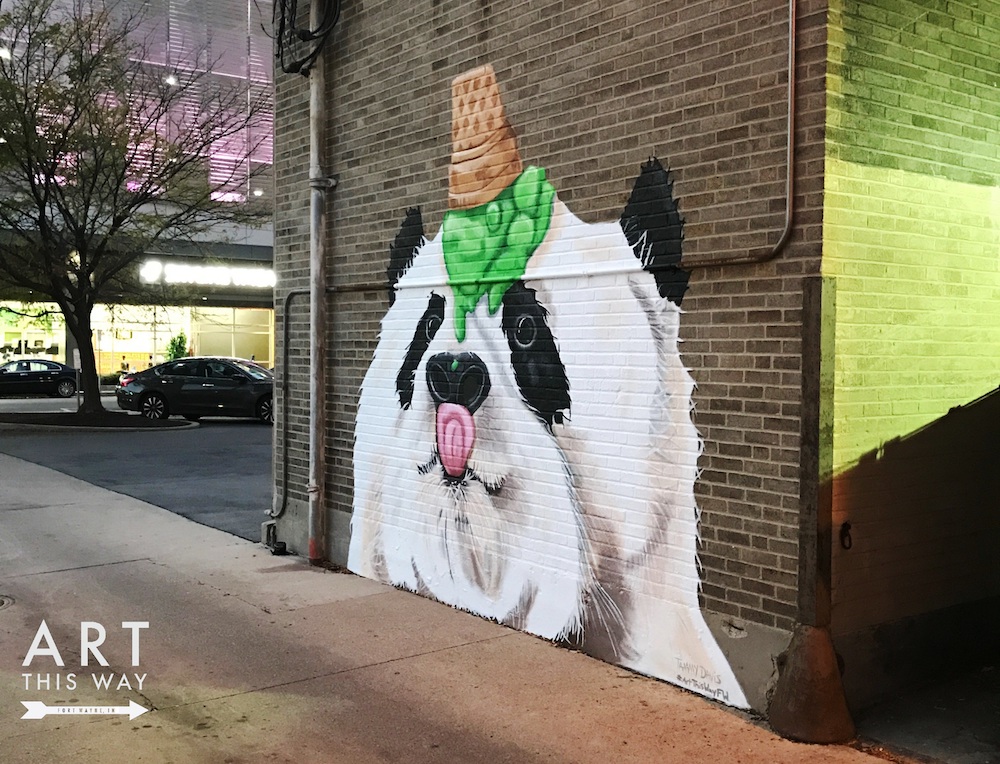
It’s this professionalized street art that is transforming downtown Fort Wayne, too, and it’s all about increasing accessibility by breaking down the barriers to art in communities, Hall explains.
“A museum can still be intimidating to people,” she says. “This is something where you don’t have to book a ticket, and you don’t have to feel like you’re going to this place where you’re not comfortable. This is just out there for everyone to enjoy, however they want to enjoy it. Whether it be taking selfies, or just taking it in.”
***
For Hall, it was her travels (and living abroad for a time) that originally sparked her interest in street art culture.
She moved back to the Summit City in 2011 and started working a day job for about four years before focusing on her artwork fulltime.
Today, she has a studio space downtown on Broadway Street above another artist and right across the street from a mural on the Brass Rail, depicting a boar and Native American.
But Hall remembers a time when these types of fine art expressions didn’t have a big footprint in downtown Fort Wayne.
In 2014, the city got its first taste of street art when Yis Goodwin (Nosego) an artist from Philadelphia, was commissioned to paint a mythical character in the alley on the side of 816 Pint & Slice.

In 2016, Hall was brought into the movement when the Downtown Improvement District bought one of her collaborations with Alex Mendez. The 16-foot, colorful steel guitar was part of several installations meant to honor the late-downtown Fort Wayne advocate Christy Landrigan.
The piece was affixed to the brick in an alley between Washington and Wayne Streets. After it went up, she told the DID that she would be interested in helping bring more street art to Fort Wayne, and they took her up on the offer.
The DID was already hearing from many downtown property owners who wanted to have art on their buildings; they just needed someone to help them coordinate the projects and fundraise for them.
So Hall stepped into the role, starting conversations with other local artists, like Terry Ratliff and Theopolis Smith, to create a movement.
“We were just kind of like, ‘How do we close this disconnect between the artists and creatives in this community and the property owners?’” Hall says. “How do we bridge that gap?”
The last few years, this has been Hall’s challenge.
***
Art This Way is loosely modeled on The Unexpected project in Fort Smith, Arkansas, which has transformed its downtown into “a world-class destination for urban and contemporary public art.”
Hall says two key similarities are that both programs source highly curated creative talent from across the country (or around the world) and give artists the freedom to express themselves in a public space.
Each fall, Art This Way puts out a call-for-entry to street artists nationwide to submit their designs. Then, in the spring, a jury made up of a range of community members—from artists and educators to city leaders, architects, and even bank CEOs—selects the winning pieces.
After that, the property owners have the chance to sign off on the final selections, and the artists go to work.
So far, 15 property owners are participating in the program, and every piece that has been suggested to them has been approved.
The support from the local community has been huge, Hall says.
“The only complaints we hear are from people who want more of it—property owners outside of our two-block area who want to participate in the program,” she explains.
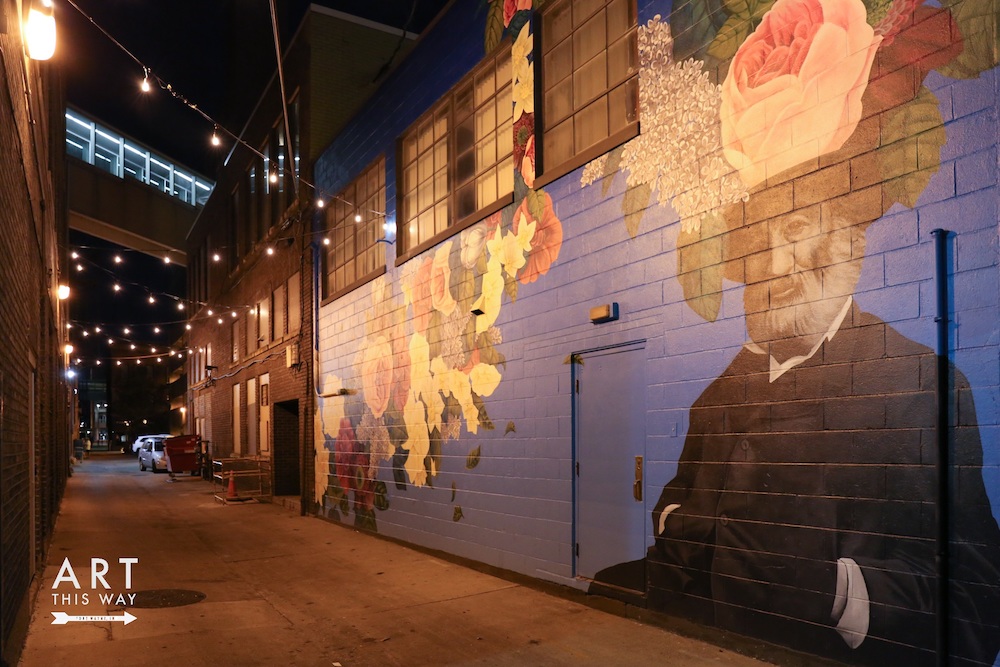
Looking to the future, Hall would like to see artistic expressions expand into city streets and other public spaces beyond the 2-block area of Art This Way, but it’s all dependent on funding and support, she says.
One of the biggest hurdles to public art is the expense of producing it and paying the artist a fair wage. A mural the size of the panda on Star Financial Bank costs about a $5,000. A full-wall piece like the Walt Whitman mural costs closer to $11,000.
“That’s including the contingency fund, paint, supplies, the lift tool, the artist stipend,” Hall explains. “There are a lot of little things that go into it.”
Art This Way’s funding varies from year-to-year, too, primarily depending on how much money they raise in their annual Art Crawl fundraiser. The program is funded by a combination of private donations, sponsorships, and grants.
The 2018 Art Crawl raised more than $10,000 for 2019’s projects.
Despite its costs, street art has been shown to bring foot traffic, free social media marketing, and general beatification to an area. It has even been shown to inspire innovation in cities.

These benefits have convinced some Fort Wayne property owners that public art is worth investing in—even without Art This Way’s help.
“The buffalo piece on the Landing technically falls outside of our two-block area for Art This Way, but it was done by Tim Parsley, the same artist who did the Walt Whitman piece for us,” Hall says. “His introduction to the property owner on the Landing actually happened while he was doing the Whitman piece, so it was cool to see that happen organically where a property owner was like, ‘I’m going to invest in bringing art to another part of downtown.’”
She says that’s another important aspect of programs like Art This Way.
“It shows that artists are here,” Hall says.
Want to learn more?
Visit Art This Way’s website, follow them on social media, or email Hall at Artthiswayfw@gmail.com.




